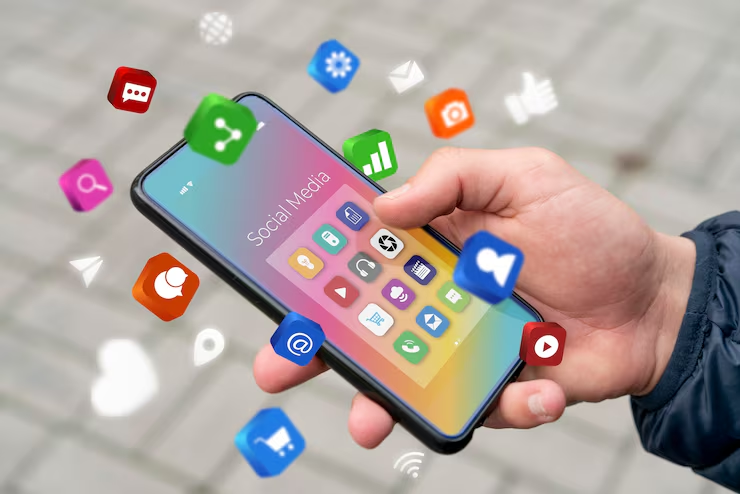Click here to buy secure, speedy, and reliable Web hosting, Cloud hosting, Agency hosting, VPS hosting, Website builder, Business email, Reach email marketing at 20% discount from our Gold Partner Hostinger You can also read 12 Top Reasons to Choose Hostinger’s Best Web Hosting
You feel stuck: your phone is crowded with half-used apps, important files are scattered across folders, learning a new skill looks expensive and slow, and a single compromised password can derail a week’s work. That daily friction costs time, opportunities, and peace of mind. The solution isn’t flashy new tools — it’s a short, curated set of useful smartphone apps you should install that solve core needs: learn faster, organize better, think clearer, secure stronger, and send big files reliably.
3 VPNs That Pass All Tests (2025)
- NordVPN: Zero leaks in tests, RAM-only servers, and Threat Protection to block malware.
- Surfshark: Unlimited devices, Camouflage Mode for bypassing VPN blocks, and CleanWeb ad-blocker.
- ExpressVPN: Trusted Server tech (data wiped on reboot) and consistent streaming access.
Why this list matters
Most roundups simply name apps. Here I treat your phone as a system: five real needs (learn, organize, think, secure, connect) and one practical Phone Resilience Stack that combines apps into repeatable micro-workflows. The emphasis is on immediate, measurable wins — clear space, finish a course module, secure a crucial account, or send a 5GB file without stress.

The 11 Smartphone Apps You Should Install and How to Use Them
1. Learning apps (Udemy / Coursera / Khan Academy)
What they solve: Skill gaps, expensive courses, time constraints. Why install: Many paid platforms have free or audit options. You can download lessons for offline study and pace learning around a busy life. Micro-step: Pick one short course (<5 hours), schedule 20 minutes daily, and apply one concept immediately.
2. Dual-pane file manager for Android (explorer-style)
What it solves: Scattered files, full storage, duplicate downloads. Why install: A dual-pane manager shows folder sizes, lets you compare two folders at once, and often includes an encrypted vault for sensitive files. Micro-step: Open storage view → identify top 3 largest folders → move to cloud or delete duplicates.
3. c — mobile AI for drafts, research, and translations
What it solves: Slow drafting, repeated research, language friction. Why install: Google’s Gemini app turns messy notes, transcripts, and basic prompts into clear outlines, scripts, or localized replies in seconds — very helpful when you need a fast draft or a multilingual reply. Use it for quick summaries, content outlines, and short scripts. Micro-step: Paste a YouTube transcript and ask: “Create a 1,200‑word blog outline with H2/H3 headings.”
4. Elevate (or another brain-training app)
What it solves: Focus, memory gaps, mental sluggishness. Why install: Short daily exercises (5–10 minutes) improve memory, processing speed, and verbal skills over time. Micro-step: Do two short sessions daily for two weeks and track small improvements in concentration.
5. Google Drive (regular backups + hidden features)
What it solves: Lost files, device failure, messy sharing. Why install: 15 GB free, easy sharing, offline file access, and integration with most apps. Keep a critical folder synced and enable offline files for travel or spotty internet. Micro-step: Set the Camera/Photos auto-backup on and create a monthly backup routine.
6. Feedly (or similar RSS aggregator)
What it solves: Information overload and scattered news sources. Why install: Aggregates blogs, YouTube channels, and news into one feed so you can follow topics efficiently without endless searching. Micro-step: Create two folders: Work (5–8 trusted sources) and Passion (3–5 favorite blogs). Skim 10–15 minutes/day.
7. MEGA (large-file transfer + protected links)
What it solves: Failing WhatsApp uploads, stuck email attachments, big client files. Why install: Upload unlimited-size files (subject to quota), create password-protected and time-limited links, and share reliably with clients. For an overview of file-sharing tools, SmashingApps maintains an up-to-date roundup of free services. Micro-step: Upload the final export, generate a time-limited link, and send it to the client instead of attempting direct app transfers.
8. Google Authenticator (time-based codes)
What it solves: Password-only accounts, easy compromise. Why install: Adds a rotating code that changes every 30 seconds and works offline — a simple, high-impact security upgrade. Micro-step: Enable 2FA for email/banking/social accounts; save recovery codes in a secured note or password manager.
9. Signal (privacy-first messenger)
What it solves: Sensitive communications, metadata exposure. Why install: Signal uses state-of-the-art end-to-end encryption — privacy by design for messages and calls. If privacy matters for family or business, keep Signal installed and encourage contacts to use it. Micro-step: Switch one private chat (family or client) to Signal and use disappearing messages for sensitive threads.
10. Official emergency / public safety app (country-specific)
What it solves: Slow emergency response, lack of location details. Why install: Many countries maintain apps that alert emergency contacts and authorities with location and medical details. Configure your trusted contacts and test alert behavior in non-emergency mode. Micro-step: Add 3 emergency contacts and verify the alert flow once.
11. Encrypted vault / password manager
What it solves: Storing passwords, recovery codes, and serials insecurely. Why install: Use a dedicated password manager for cross-device syncing; if you prefer not to install another app, use the encrypted vault feature of a trusted file manager but migrate to a full manager when possible. Micro-step: Migrate the top 20 passwords and enable a strong master passphrase + biometric unlock.
Build the Phone Resilience Stack
Use these five steps to combine the apps into a repeatable routine:
- Learn: One short course per skill (20 mins/day).
- Capture & Store: Auto‑backup to Google Drive; big projects to MEGA.
- Organize: Weekly file-manager sweep — remove duplicates and archive.
- Protect: 2FA + encrypted vault for recovery codes.
- Communicate & Alert: Signal for private comms + local emergency app for safety.
Mini case study: A freelance videographer used the stack to reduce missed deadlines. He learned a new editor via a short course, uploaded assets to MEGA, cleaned his phone weekly with a file manager, protected client accounts with 2FA, and used Signal for urgent client messages. Result: faster turnaround and fewer failed transfers.
Key Takeaways
- Useful smartphone apps you should install fix real gaps: learning, storage, organization, security, and emergency readiness.
- Gemini speeds up drafting and multilingual replies — paste a transcript and ask for an outline.
- Signal offers strong end-to-end encryption for private messages and calls.
- A dual-pane file manager + cloud backup frees space and stops frantic file searches (see SmashingApps’ file-and-data-sharing roundup).
- Build a Weekly 30‑minute routine: backup, organize, train, secure.
FAQs (People Also Ask)
Q: Which app is best for free courses?
A: Khan Academy for structured learning; Udemy and Coursera for practical micro-courses and paid certificates. Use offline downloads when available.
Q: Is Signal really more private than WhatsApp?
A: Signal is privacy-first and uses the open-source Signal Protocol; it stores minimal metadata and encrypts messages and calls end-to-end. For the most sensitive chats, Signal is recommended.
Q: Can I rely only on Google Drive for backups?
A: Google Drive is great for daily backups, but for very large exports or archival work use MEGA or an additional encrypted backup to reduce single-point risk.
Q: What’s the quickest 2FA setup?
A: Install Google Authenticator, scan the site QR code, and securely store the recovery codes in an encrypted vault.
Conclusion
You don’t need dozens of apps — you need a concise, reliable toolkit. Install the apps above, follow the micro-workflows, and your phone evolves from a cluttered device into a resilient productivity hub. Start with one app from each category this week and commit 15–30 minutes to set them up.
Now loading...






